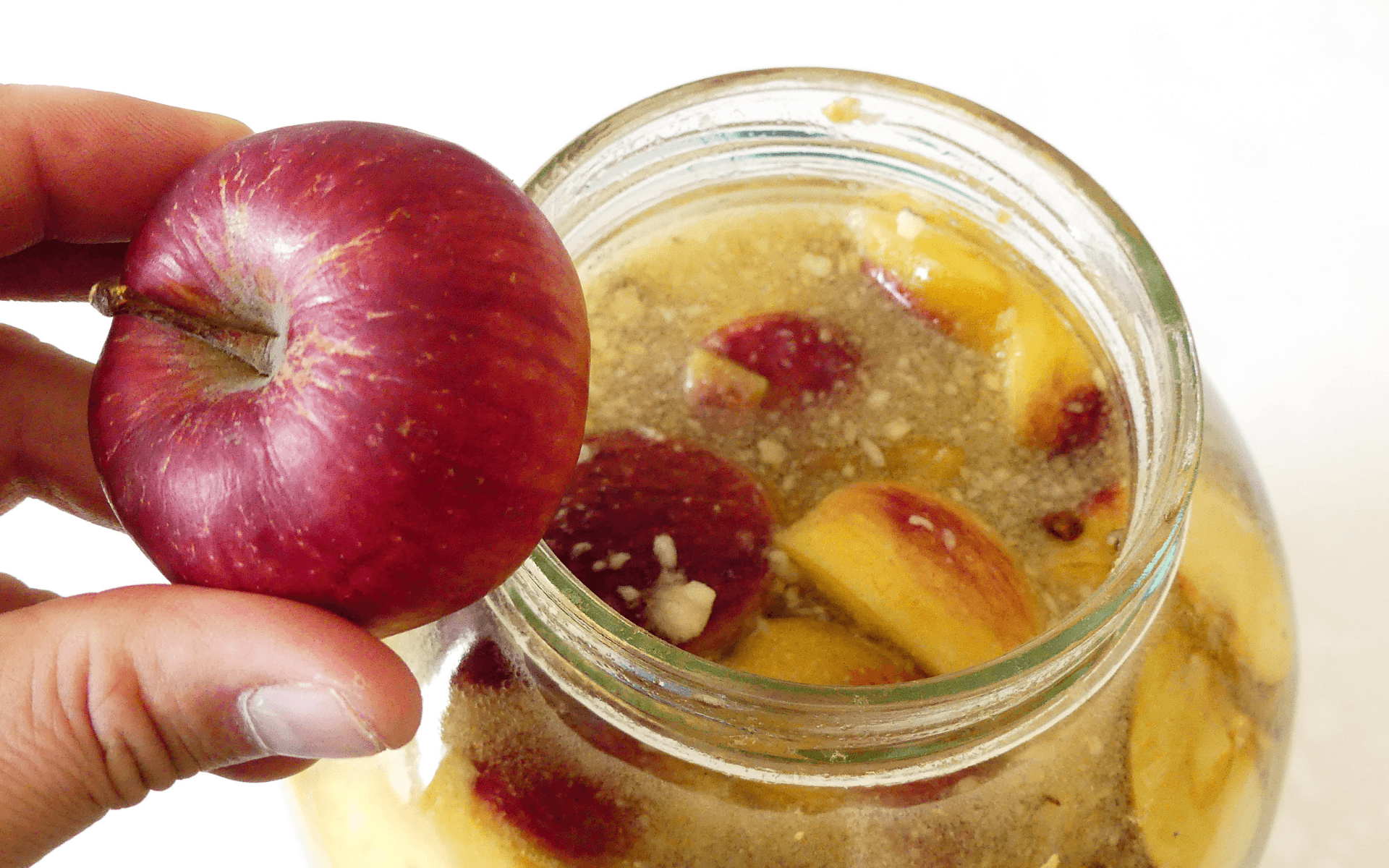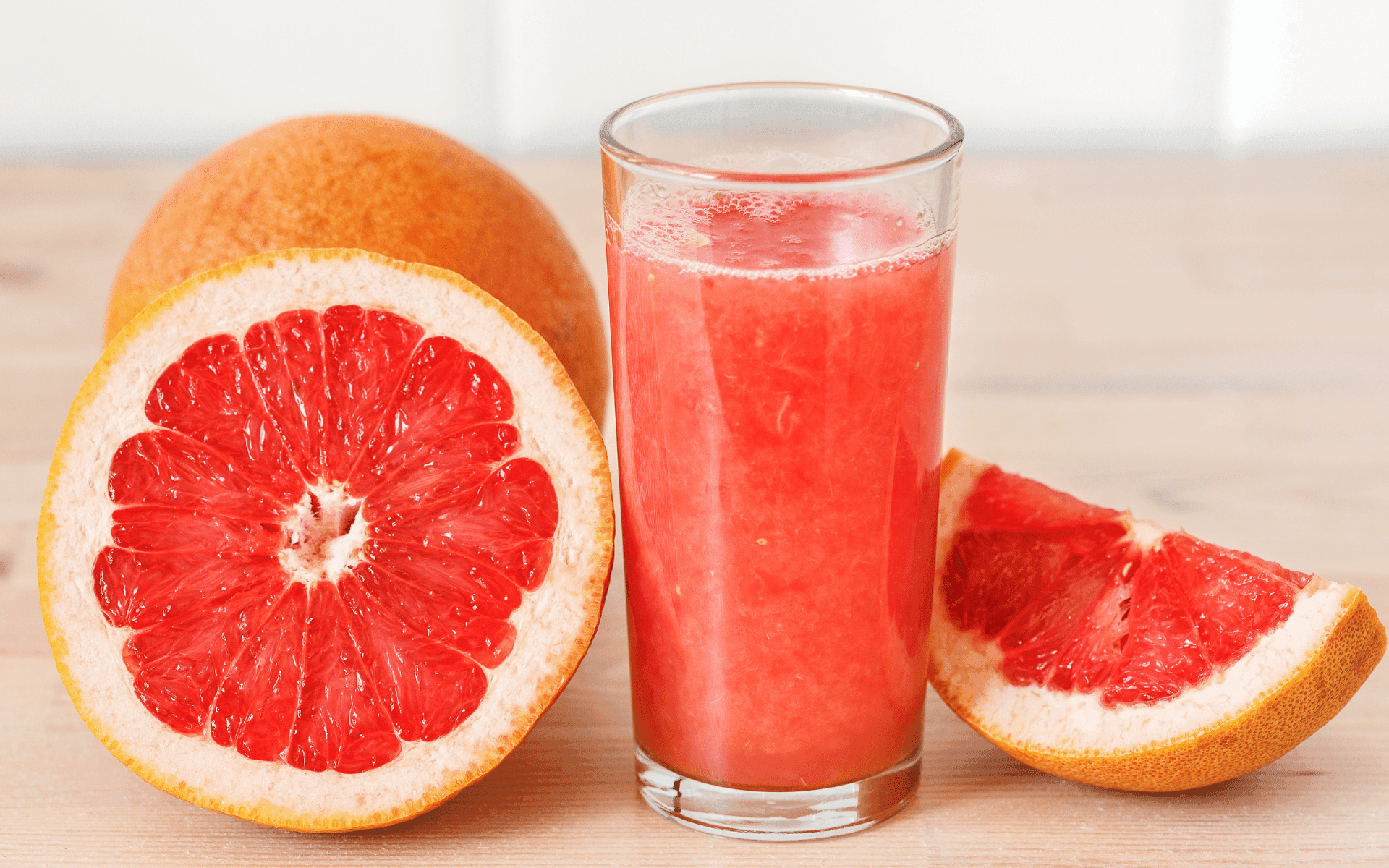Hey there! Heard some buzz about apple cider vinegar (ACV) and weight loss? You’re not alone! This natural remedy has been gaining serious popularity, and for good reason.
Why ACV is More Than Just a Trendy Tonic
While it might not be the newest weight-loss strategy on the block, ACV is a superstar when it comes to digestive health. It acts as a natural detoxifier and can curb your appetite, making it a potential partner in your weight-loss journey. But that’s not all! Studies suggest it might even offer a helping hand in managing blood sugar and burning fat.
Let’s Dive Deeper: Unveiling the Magic of ACV
What Exactly is This Apple Cider Vinegar?
It’s all in the name! ACV is made from fermented apples. But there’s a bit more to the story than just tossing some apples in a jar and waiting for magic to happen. Here’s a peek behind the curtain of the ACV-making process:
From Orchard to Bottle: The ACV Journey
- Apple Picking: The journey starts with fresh, ripe apples. Different types of apples can be used, but some companies opt for specific varieties known for their high sugar content, like McIntosh or Gala apples.
- The Crushing: Next, those juicy apples get crushed into a pulp. This breaks down the cell walls of the apples, releasing the sugars they contain.
- Sugary Feast for Yeast: The apple pulp is then introduced to yeast. This little party favor acts like a tiny sugar-eating machine. The yeast munch on all those yummy apple sugars and convert them into alcohol through a process called fermentation. Think of it like a microscopic apple cider brewery!
- The Great Transformation: Here’s where the magic really happens! After the yeast have finished their sugary feast, bacteria are introduced. These special bacteria take the alcohol produced by the yeast and ferment it further, transforming it into acetic acid. Acetic acid is the key ingredient that gives ACV its distinct sour taste and vinegar aroma.
- The Final Touches: After fermentation is complete, the ACV might be filtered to remove any sediment. Some brands choose to leave the “mother” in the final product. The “mother” is a harmless strand of cellulose that forms during fermentation and gives unfiltered ACV a cloudy appearance.
And voila! After about a month of this fascinating transformation, apple cider vinegar is ready to be bottled up and enjoyed (or, well, maybe tolerated at first!).
How Do I Make My Own Apple Cider Vinegar?

Feeling crafty and curious? You can actually make your own ACV at home! It’s a fun and rewarding way to enjoy the potential benefits of this fermented wonder. Here’s what you’ll need:
- Apple Picking (Sort of): You’ll need some apples! Any kind of apples will work, but some people prefer to use sweeter varieties like McIntosh or Gala apples because they have a higher sugar content, which feeds the yeast during fermentation.
- Sharp Container: A large glass jar with a lid is ideal. Make sure it’s big enough to hold your apples comfortably and allow some space at the top for air circulation.
- Filtering Friend (Optional): While not essential, a cheesecloth or coffee filter can be helpful for straining the ACV after fermentation.
- Patience is a Virtue: Making ACV is a waiting game. The fermentation process takes about a month, so be prepared to wait a bit before enjoying your homemade vinegar.
Here’s the Fun Part: The DIY Process!
-
Apple Chopping Party: Wash your apples and chop them into rough cubes or slices. No need to be fancy with the chopping, just break them down into manageable pieces.
-
Filling Up Your Jar: Add the chopped apples to your clean glass jar. You can fill the jar up to ¾ full, leaving some space at the top.
-
Sugar Rush for the Yeast: Sprinkle some sugar over the apples. A good rule of thumb is about 1 tablespoon of sugar per cup of chopped apples. The sugar acts as a food source for the yeast, which will be introduced next.
-
Introducing the Tiny Party Guests: Pour some water into the jar to cover the apples. Now comes the fun part: add a splash of raw, unfiltered apple cider vinegar (about ¼ cup). This introduces the necessary bacteria to kickstart the fermentation process.
-
Letting Nature Take its Course: Cover the jar with a lid, but not too tightly. You want to allow some air circulation. Place the jar in a warm, dark spot for the next month. Every few days, give the jar a gentle swirl to redistribute the contents.
-
Straining Out the Bits (Optional): After about a month, you should notice that the mixture has a vinegary smell and taste. This means your ACV is ready! Strain the liquid through a cheesecloth or coffee filter to remove the apple bits (optional).
-
Bottling Up Your Creation: Pour your homemade ACV into a clean glass bottle and store it in a cool, dark place.
Congratulations! You’ve just created your own batch of apple cider vinegar. It might not be quite as refined as store-bought varieties, but it’s a fun way to enjoy the potential benefits of ACV and feel accomplished in the process.
Remember, while making your own ACV can be fun, store-bought options are readily available and might be more convenient for some people. We explored some popular brands in a previous section to help you find the perfect ACV for your needs.
A Multitude of Health Benefits Beyond Weight Loss

We know you’re super interested in ACV’s weight-loss potential, but this superstar deserves recognition for its wider range of health benefits! People have been using ACV for centuries for various purposes. Here’s a glimpse into what it might offer:
-
Blood Sugar Management: Studies suggest that ACV may help regulate blood sugar levels. This could be beneficial for people with prediabetes or type 2 diabetes, but it’s important to talk to your doctor before incorporating ACV into your routine if you have any blood sugar concerns.
-
Heart Health Hero: Some research suggests that ACV might play a role in improving heart health by potentially lowering bad cholesterol (LDL) levels and increasing good cholesterol (HDL) levels. However, more research is needed to confirm these effects.
-
Fungal and Bacterial Fighter: The acetic acid in ACV has natural antimicrobial properties. This means it might help fight off some fungi and bacteria. While promising, more research is needed to understand the full scope of this benefit.
-
Skin Soother: Diluted ACV has been used as a topical solution for various skin conditions like acne and eczema. However, it’s important to note that ACV can be quite acidic, so it’s crucial to dilute it properly before applying it directly to your skin. A patch test on a small area is also recommended to check for any irritation.
-
Shiny Hair Helper: Some people swear by using diluted ACV as a hair rinse to add shine and combat dandruff. The theory is that the acidity of ACV might help balance the scalp’s pH and remove product buildup. As with skin, it’s vital to dilute ACV properly to avoid irritation.
The Science Behind ACV’s Weight-Loss Power
ACV has been making waves in the weight-loss world, but what’s the science behind its potential benefits? Let’s dive deeper into some of the theories:
-
Appetite Control Champion: Studies suggest that ACV might help you feel fuller for longer. This could be due to several factors. The acetic acid in ACV might slow down the emptying of your stomach, making you feel satisfied for a longer period. Additionally, some research suggests ACV may increase levels of certain hormones that signal feelings of fullness to your brain.
-
Blood Sugar and Insulin Rollercoaster Regulator: Big blood sugar spikes and crashes can leave you feeling sluggish and reaching for sugary snacks. Some studies suggest that ACV might help regulate blood sugar levels after meals. This could be because acetic acid might interfere with the absorption of carbohydrates, preventing those sharp blood sugar spikes. Stable blood sugar levels can lead to steadier energy and potentially curb cravings.
-
Fat-Burning Furnace Booster: The theory here is that ACV might give your metabolism a slight nudge, helping your body burn fat more efficiently. Some research suggests that acetic acid might increase the burning of fat for energy, but more studies are needed to fully understand this effect.
-
Detoxification Dynamo: Our bodies accumulate toxins over time, and some believe that ACV can help with detoxification. The acetic acid in ACV might aid in flushing out toxins, potentially contributing to weight loss. However, it’s important to note that our bodies already have natural detoxification systems, and the extent of ACV’s role in this process needs further investigation.
-
Digestive Dream Team Player: A healthy gut is key for overall health, and ACV might play a supporting role. The acetic acid in ACV may help promote the growth of good bacteria in your gut, while hindering the growth of bad bacteria. Additionally, certain acids in ACV might aid in digestion by breaking down food particles and allowing your body to absorb nutrients more effectively. Improved digestion can lead to better nutrient absorption and potentially support weight management efforts.
It’s important to remember that these are just some of the theories behind ACV’s weight-loss potential. More research is needed to fully understand the effectiveness and mechanisms of ACV for weight loss.
Ready to Give ACV a Try? Here’s How!

So, you’re excited about the potential of ACV to support your weight-loss journey? Let’s explore how to safely and effectively add it to your routine:
Timing is Key: When to Sip Your ACV Elixir
There are two strategic times when incorporating ACV might be most beneficial for weight loss:
-
Pre-Meal Magic (30 Minutes Before You Eat): Drinking a glass of ACV diluted with water about 30 minutes before a meal can be a double whammy. The acetic acid might help with feelings of fullness, potentially curbing your appetite before you dig in. Additionally, it might aid in digestion by breaking down food particles.
-
Craving Crusher (When the Munchies Attack): We all face cravings from time to time. The next time you feel those hunger pangs for unhealthy snacks, whip up a glass of ACV water. The appetite-suppressing properties of ACV might help you resist those cravings and stay on track with your weight-loss goals.
Finding Your Perfect Dose: How Much ACV is Right for You?
It’s important to start slow with ACV, especially if you’re new to it. Here’s a general guideline to help you find your sweet spot:
-
Day 1: Begin with a single tablespoon of ACV diluted in 8 ounces of water (about a cup). See how you tolerate it.
-
Gradually Increase: If you feel comfortable, you can gradually increase the dose to a maximum of 2 tablespoons per cup of water over time. Remember, everyone’s body reacts differently, so listen to yours and adjust accordingly.
Taste Adventure: Delicious Ways to Enjoy Your ACV
Let’s be honest, straight-up ACV shots aren’t exactly a flavor explosion. But fear not, there are tasty ways to incorporate ACV into your diet:
-
The Simple and Effective Classic: For the purists out there, a simple mix of 1-2 tablespoons of ACV with 8 ounces of water is a perfectly acceptable way to enjoy your ACV.
-
Green Tea Powerhouse: Green tea is a metabolism booster, and adding a splash of ACV to your cooled green tea can create a refreshing and potentially fat-burning duo. Just remember to let your tea cool down before adding the ACV to avoid killing off any beneficial nutrients.
-
Lemony Goodness: Lemon water is a popular choice for its health benefits, and adding a touch of ACV and cinnamon can create a delicious and potentially digestion-friendly drink.
We’ll be sharing more recipe ideas in future sections, so stay tuned for some fun and flavorful ways to incorporate ACV into your weight-loss plan!
Remember, consistency is key! Aim to incorporate ACV into your routine regularly to potentially experience its weight-loss benefits. We’ll also address some frequently asked questions about ACV in the next section to make sure you have all the information you need to embark on your ACV weight-loss adventure!
FAQs About Apple Cider Vinegar: Your Questions Answered!

We know you’re brimming with questions about incorporating ACV into your weight-loss journey. Let’s dive into some of the most frequently asked questions:
How long does Apple Cider Vinegar last?
Great question! According to Bragg’s website (a popular ACV brand), ACV can stay good for pretty much forever. However, the FDA requires them to say it has a shelf life of 3 to 5 years. The folks at Bragg’s recommend storing it out of direct sunlight, and if you do that, it should be good to go for much longer than that timeframe.
Does Apple Cider Vinegar need to be refrigerated?
Nope! As long as you keep your ACV out of direct sunlight, it’ll be perfectly happy chilling on your pantry shelf or counter.
Is Apple Cider Vinegar safe for people with gluten sensitivities or nut allergies?
Yes! ACV is generally considered safe for those with gluten sensitivities or nut allergies.
What are some potential side effects of Apple Cider Vinegar?
While ACV is generally safe for most people when used in moderation, there are a few things to keep in mind:
-
Tooth Enamel Erosion: ACV is acidic, and excessive consumption can potentially damage your tooth enamel. To be on the safe side, dilute your ACV with water and avoid swishing it around your mouth for extended periods. Rinse your mouth with water after consuming ACV.
-
Digestive Issues: For some people, especially those with sensitive stomachs, ACV might cause heartburn or upset stomach. Start slow and see how you tolerate it before increasing your intake.
-
Medication Interactions: ACV might interact with certain medications, such as diuretics or laxatives. Always consult with your doctor before using ACV if you’re taking any medications.
What brand of Apple Cider Vinegar should I choose?
When it comes to ACV brands, there are many options on the shelves. But if you’re looking for the best bang for your buck in terms of potential health benefits, Bragg’s Organic Raw Unfiltered Apple Cider Vinegar is a popular choice. Here’s why:
- Organic: Organically grown apples are used to make the vinegar.
- Raw & Unfiltered: This means the beneficial bacteria and enzymes haven’t been filtered out.
- Unpasteurized: Pasteurization can kill off some of the good bacteria in ACV.
- Contains the “Mother”: The “mother” is a strand of cellulose that forms during fermentation and is believed to have some health benefits.
There are other brands out there that might be a good fit for you, so do some research and see what appeals to you.
As we explored throughout this guide, apple cider vinegar is a versatile and potentially beneficial ingredient for overall health and wellness, including weight loss. However, it’s important to remember that ACV is not a magic bullet. It’s one tool in your weight loss toolbox, and it’s most effective when combined with a healthy diet, regular exercise, and a sustainable lifestyle.
Here are a few key takeaways to keep in mind:
-
Consistency is Key: Incorporating ACV into your routine regularly is essential to potentially experience its weight-loss benefits. Aim to include it in your meals or drinks at least once or twice daily.
-
Start Slow and Listen to Your Body: Begin with a small dose of ACV and gradually increase it as you see how you tolerate it. It’s important to pay attention to how your body feels and adjust your intake accordingly.
-
Experiment with Different Recipes: There are endless ways to enjoy ACV! From refreshing drinks to flavorful salad dressings, find recipes that you enjoy and that fit seamlessly into your daily routine.
-
Consult Your Doctor: If you have any underlying health conditions or are taking medications, it’s always a good idea to consult with your doctor before incorporating ACV into your routine.
Remember, sustainable weight loss is a journey, not a destination. Embrace the process, focus on making healthy choices, and enjoy the many potential benefits of ACV along the way!
Resources:
-
The Effect of Apple Cider Vinegar on Body Weight: This study investigated the effects of apple cider vinegar on body weight in overweight and obese adults. Participants were divided into two groups: one group consumed 1 tablespoon of apple cider vinegar diluted in water with each meal, while the other group consumed a placebo. After 12 weeks, the group that consumed apple cider vinegar had lost significantly more weight and body fat than the placebo group.
-
Apple Cider Vinegar and Its Anti-Obesity Effects: This study reviewed the available scientific evidence on the anti-obesity effects of apple cider vinegar. The authors concluded that apple cider vinegar may be a potential aid in weight loss due to its ability to increase satiety, reduce appetite, and improve insulin sensitivity.
-
Anti-Diabetic and Anti-Obesity Effects of Vinegar: A Meta-Analysis of Randomized Controlled Trials: This meta-analysis of randomized controlled trials examined the effects of vinegar on blood sugar levels and body weight. The authors found that vinegar consumption led to significant reductions in both fasting blood sugar levels and body weight.











